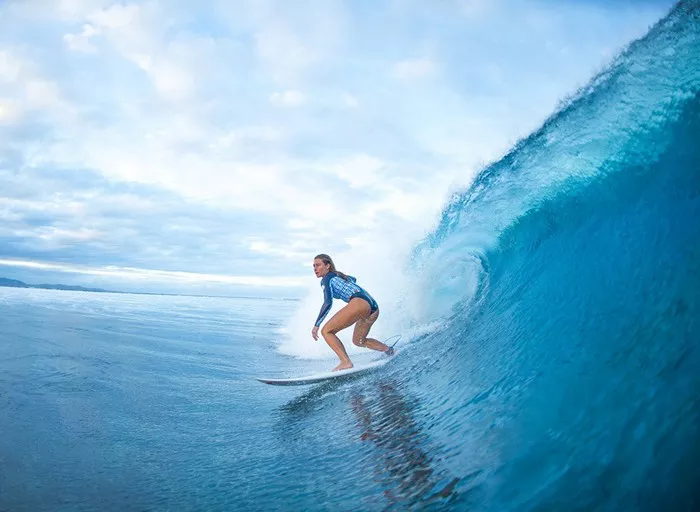Wakesurfing has rapidly gained popularity in recent years as an exhilarating water sport that combines elements of surfing and wakeboarding. Whether you’re a beginner looking to try wakesurfing for the first time or an experienced rider seeking the latest innovations in wakesurf board design, selecting the right board is crucial for maximizing your enjoyment on the water. In this guide, we’ll delve into the key features and considerations that define the best wakesurf boards on the market today.
Understanding Wakesurf Board Types
Wakesurf boards come in various shapes, sizes, and materials, each tailored to different riding styles and skill levels. The main types of wakesurf boards include:
1. Surf Style Boards: These resemble traditional surfboards, featuring a rounded nose and a wide, stable platform. Surf style boards are ideal for riders who prioritize a smooth, laid-back surfing experience and enjoy carving on the wave.
2. Skim Style Boards: Skim style wakesurf boards are typically shorter, with a flatter profile and sharper rails. They are designed for more advanced riders who prefer performing tricks, spins, and aerial maneuvers.
3. Hybrid Boards: As the name suggests, hybrid wakesurf boards combine elements of both surf and skim styles. They offer versatility, making them suitable for a wide range of riding styles and skill levels.
Key Considerations When Choosing a Wakesurf Board
When shopping for a wakesurf board, several factors should influence your decision:
1. Board Size: The size of the wakesurf board is crucial for stability and maneuverability. Larger boards (e.g., 5’6″ to 5’10”) are generally more stable and easier to ride, making them ideal for beginners. Smaller boards (e.g., under 5’4″) are lighter and more maneuverable, suitable for advanced riders.
2. Board Shape: The shape of the wakesurf board determines its performance characteristics. Surf style boards typically have a wider nose and more pronounced rocker for smooth carving, while skim style boards are narrower with less rocker for increased speed and agility.
3. Rocker Profile: Rocker refers to the curvature of the board from nose to tail. More rocker provides better maneuverability and control, making it suitable for tricks and aerials. Less rocker enhances speed and is preferable for cruising and carving.
4. Construction Material: Wakesurf boards are commonly made from foam, fiberglass, and epoxy. Foam core boards are lightweight and buoyant, while fiberglass and epoxy boards are durable and provide better performance.
5. Fin Setup: The fin configuration significantly affects the board’s stability and maneuverability. Single fin setups are more stable but less maneuverable, while multiple fin setups offer better control and agility.
Top Wakesurf Board Brands
Several reputable brands specialize in manufacturing high-quality wakesurf boards. Some of the top brands known for their innovation and performance include:
1. Ronix: Renowned for cutting-edge board designs and advanced materials, Ronix offers a wide range of wakesurf boards catering to different riding styles and skill levels.
2. Hyperlite: With a legacy of producing top-tier wakeboards, Hyperlite’s wakesurf boards are synonymous with quality, durability, and performance.
3. Phase 5: A leader in skim style wakesurf boards, Phase 5 is favored by professional riders for its lightweight construction and exceptional maneuverability.
4. Liquid Force: Liquid Force produces versatile wakesurf boards suitable for beginners to advanced riders, incorporating innovative features for optimal performance on the water.
Choosing the Right Board for Your Skill Level
Selecting the best wakesurf board depends largely on your skill level and riding preferences:
1. Beginners: If you’re new to wakesurfing, opt for a larger, stable board with ample buoyancy. Surf style boards are generally more forgiving and easier to learn on.
2. Intermediate Riders: For those looking to progress their skills, consider a hybrid board that balances stability with maneuverability. This allows you to experiment with different riding styles and techniques.
3. Advanced Riders: Experienced wakesurfers will appreciate specialized boards tailored to their preferred riding style—whether it’s carving smooth lines on a surf style board or executing complex tricks on a skim style board.
Conclusion
Choosing the best wakesurf board involves considering various factors such as board type, size, shape, construction material, and fin setup. By understanding your skill level and riding preferences, you can select a wakesurf board that enhances your performance and enjoyment on the water. Explore reputable brands and consult with experienced riders to find the perfect board that suits your unique style and ambitions in wakesurfing. With the right board in hand, you’ll be ready to hit the waves and experience the thrill of wakesurfing like never before.

